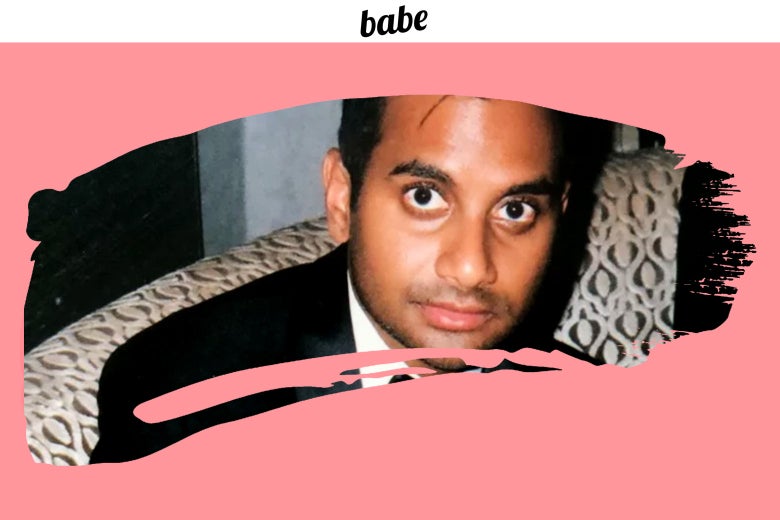

Babe.net
This week, comedian and actor Aziz Ansari became the latest prominent man to be accused of sexual misconduct. But this time, the bombshell came from a source considerably less famous than its target: a website called Babe.net. Within a few days, the site went from total obscurity to drawing responses from just about every major news outlet, and being credited with (or blamed for) either expanding or dooming the #MeToo movement as a whole.
The controversy left a lot of readers with the same question: What in the world is Babe.net? We dove into the archives to assess.
First, the basics: Babe appeared in May 2016 as an offshoot of a British-based network of publications called the Tab, in which Rupert Murdoch's News Corp. invested $6 million last year. While the Tab focuses on campus reporting, Babe's coverage areas include feminism, celebrities, "fuckboys," star signs, and fuckboys' star signs. The color palette is millennial pink. Its manifesto is headlined "babe is for girls who don't give a fuck." According to a piece in Mashable, its oldest editorial staffer is 25.
The site has made previous forays into harder journalism, including its account of an Oklahoman 17-year-old who says she was raped at a party. But its real sweet spot might be described, in a phrase Babe magazine would certainly never use, as vulgar tomfoolery. One post coins the concept of "period-trapping" as a way to determine if a guy is into you: Get him to agree to come over, then tell him you're on your period and see if he still shows up.
Another boasts an "EXCLUSIVE" update on Justin Bieber's former pet monkey ("Today Mally is trying to live his best life in Germany's Serengeti Wildlife Park, but he continues to struggle"). Its look features large font and short paragraphs interspersed with GIFs and tweets; a 600-word post might have three bold section-heads to break up all that text.
In "What your favorite sex position says about what kind of hoe you are," nine types of hoe are praised (or condemned?) for their very specific sexual habits.
Its raunchy tagline is not a one-off provocation. Babe curses, like, a lot. A short post titled "Sorry, but Kendall Jenner can't model for shit" uses the F-word three times. Other recent headlines include "Put your fucking phone away" and "Everything a fuckboy says to try and convince you he's not a fuckboy." Babe is DTF (but not the DUFF?). And it is unafraid to flout the shibboleths of millennial pop feminism ("Beyoncé is weak for not leaving cheating-ass Jay-Z").
Babe, in other words, is fun and well-meaning but unabashedly a bit of a mess. That's no crime when the stakes are low—cf. Bieber's monkey—but it's obviously dicier when you're accusing an actual human being of sexual assault. As Julianne Escobedo Shepherd wrote this week in Jezebel in a sharp piece, reporting on sexual misconduct has suddenly become a topic of high-profile general-interest journalism. "Prestige incentivizes reporting," she wrote, "and although this is a positive development, it also means that more and more of these stories are botched."
The Ansari piece, which by now has been thoroughly dissected by others, recounts a date last fall between the comedian and a then–22-year-old photographer who gets the pseudonym "Grace." Grace and Ansari went out to dinner, and then to his apartment. The evening was, she tells Babe writer Katie Way, "by far the worst experience with a man I've ever had." Grace says she pulled herself away from Ansari over and over as they hooked up, "physically giving off cues" that she wanted him to back off. At one point she went to the bathroom to collect herself, and when she came back she told him "I don't want to feel forced." He seemed to cool off and suggested they relax on the couch, but then immediately suggested she go down on him again. After they got dressed and were watching TV together, he again kissed her and moved to take off her pants. Grace later came to see the encounter as sexual assault, a reading Babe seems to validate. (Way, for her part, most recently made headlines when she called HLN anchor Ashleigh Banfield, who had criticized her piece, a "burgundy lipstick bad highlights second-wave feminist" in an email declining an on-air invitation.)
Many critics have seen this whole mess as evidence of a generation gap between feminist cohorts. Though claiming such a "generation gap" feels like too neat a framework for processing the #MeToo moment, at least half the articles Babe publishes sure seem likely to ruffle the feathers of anyone older than their editors. My personal tipping point was "What your favorite sex position says about what kind of hoe you are," in which nine types of hoe are praised (or condemned? I am not sure) for their very specific sexual habits. ("Yeah, you're a dick-sucking hoe, but not the kind to ask for head in return.") But suffice it to say, such tut-tutting is unlikely to keep the Babe team up at night. The site's whole brand is that it doesn't care whether you think it looks good. "We're cool with admitting that we are full of contradictions," its manifesto says, "because all girls are."
You depend on Slate for sharp, distinctive coverage of the latest developments in politics and culture. Now we need to ask for your support.
Our work is more urgent than ever and is reaching more readers—but online advertising revenues don't fully cover our costs, and we don't have print subscribers to help keep us afloat. So we need your help. If you think Slate's work matters, become a Slate Plus member. You'll get exclusive members-only content and a suite of great benefits—and you'll help secure Slate's future.
Join Slate Plus
Tidak ada komentar:
Posting Komentar